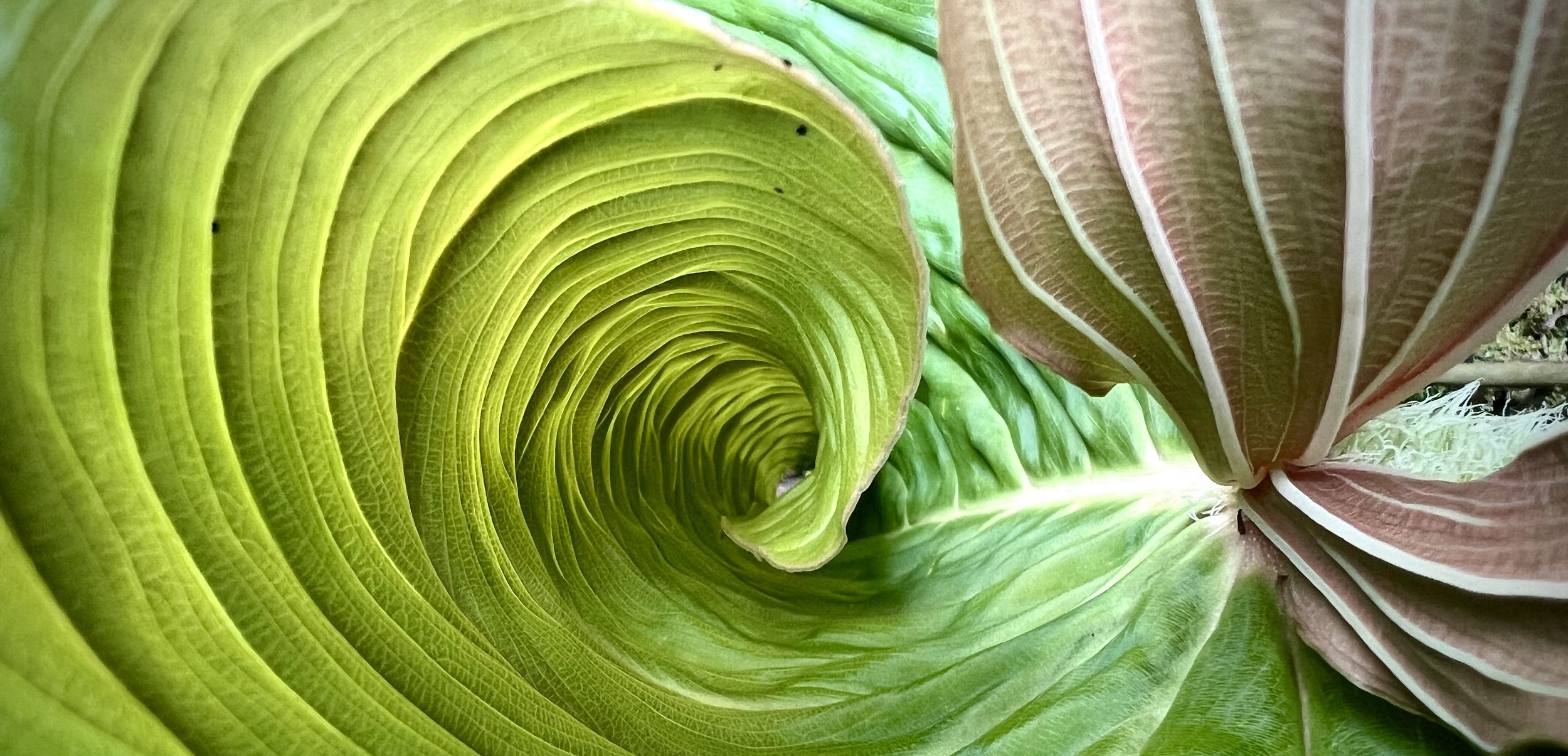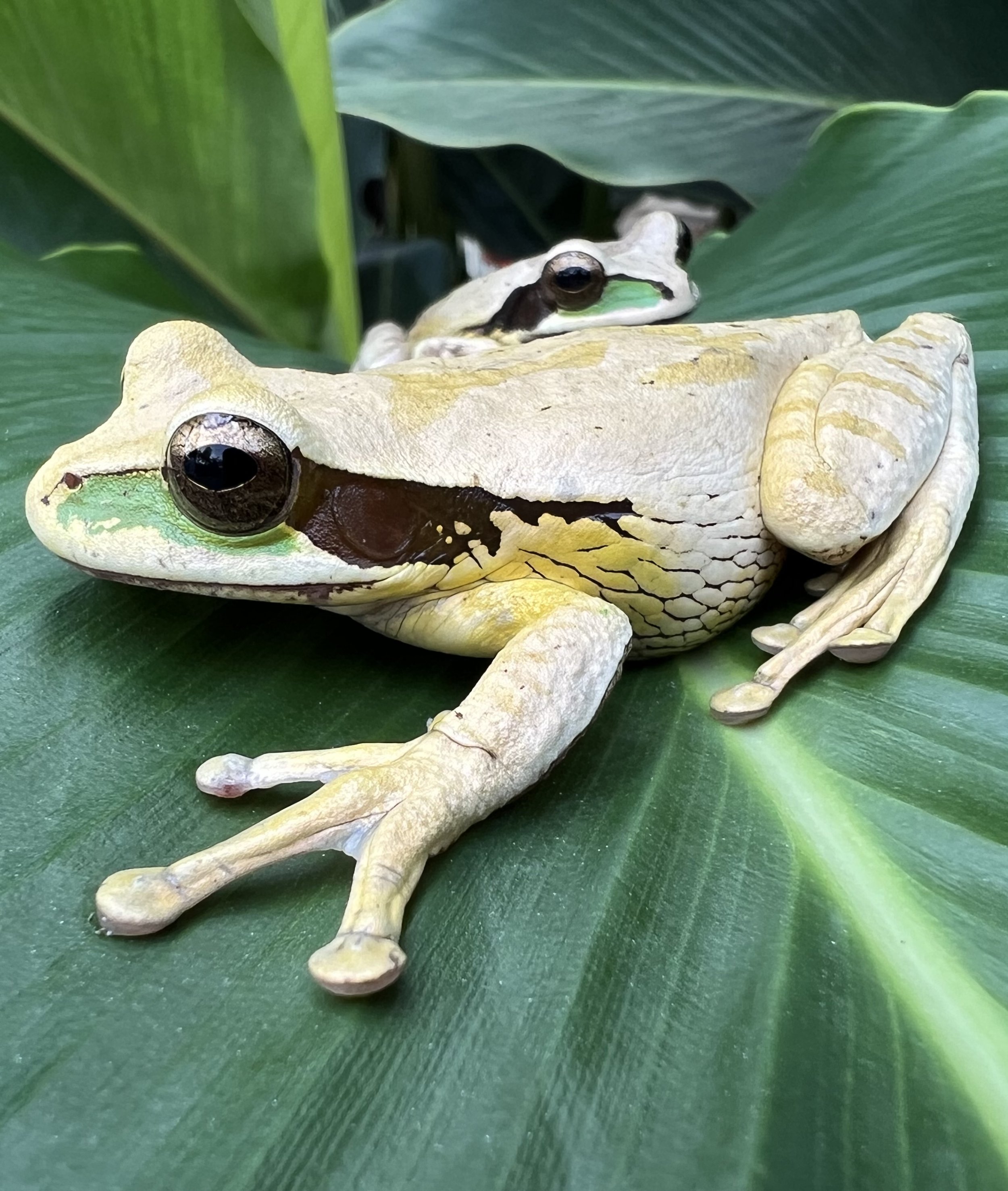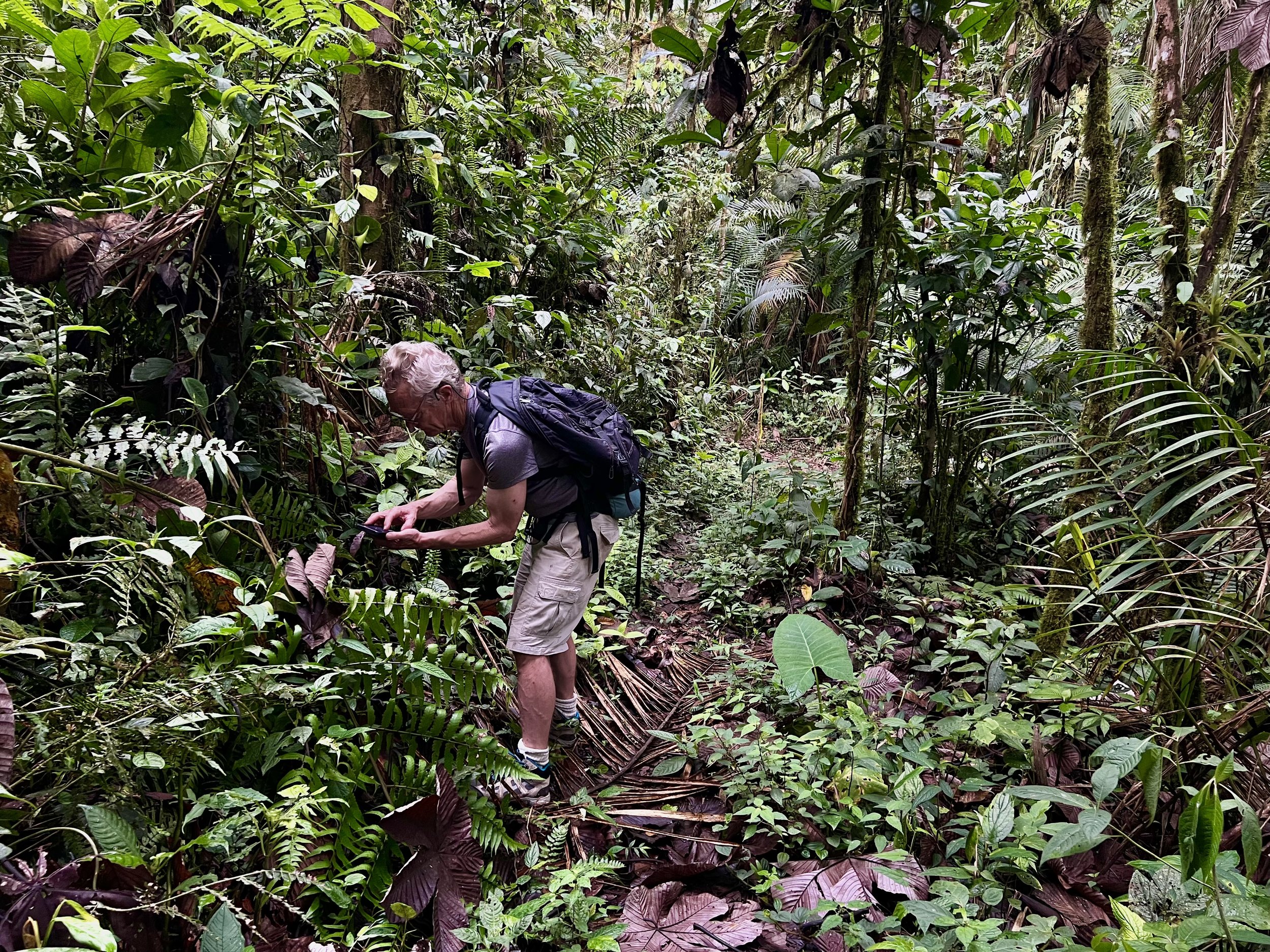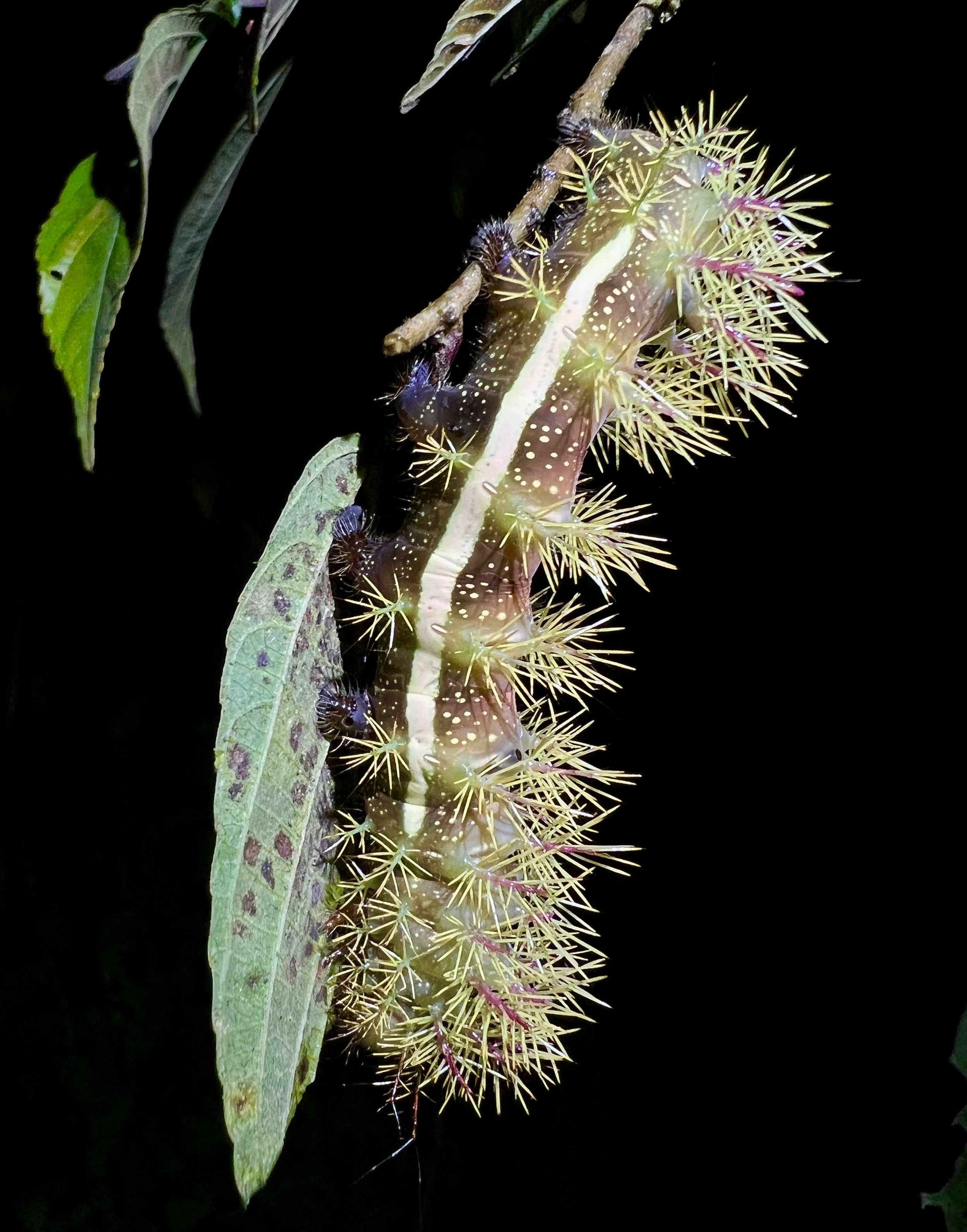
Costa Rica - Ecuador - Hawaii
TROPIC
Prey
Sea turtles subsist almost entirely on jellyfish! They’re also endangered, and their population has declined by 40% over the last three generations. Turtles often mistake trash for food, and plastic bags look an awful lot like a jellyfish when underwater.
And even when plastic bags end up in a landfill instead of the ocean, it takes 1,000 years for them to degrade. Unfortunately, the bags don't break down completely but instead photo-degrade, becoming micro plastics that absorb toxins and continue to pollute the environment.
This drawing was inspired by the disheartening amount of micro plastics and trash I saw while exploring the coast of Costa Rica.
Symbiosis
Did you know that sloths grow moss on their fur? Their slow pace and humid environment is the perfect recipe for growing moss and algae that benefits them and their ecosystem in numerous ways.
The algae that grows on a sloth’s water-retaining fur is an important food source for the sloth, and a vital source of nitrogen. Furthermore, the moss and algae in the sloth’s fur serves as effective camouflage, making them difficult for predators to spot.
Because of all the growth in their fur, sloths are basically micro-ecosystems in themselves! They host countless microorganisms and bacteria, and have a lucrative symbiotic relationship with pyralid moths (Cryptoses species).
The pyralid moth’s entire life cycle is dependent on the sloth. Pyralid moths live in the sloths fur, and lay their eggs in the sloth’s dung. Chemical analysis of sloth fur has proven that the more moths a sloth has, the more algae it grows.
I have always felt deeply connected to nature. I grew up with parents who loved the outdoors and carried me up Half Dome at seven months old. As I grew, my mom taught me the names of all the wildflowers and made a hand-illustrated wildflower booklet that I could take on hikes (I still have it). She has always been in awe of every sunset, even if it’s just the tiniest bit of orange. She loves clouds, and is always reminding me to look up and take it all in.
My dad taught me how to identify and catch lizards and snakes, and instilled in me a deep love of entomology and mycology. He taught me to really look, and to find the hidden treasures of the tiny natural world. His enthusiasm and excitement over every beetle is what inspires me to find the beauty and wonder in every detail.
Sometimes I feel like a camera with two lenses, a wide angle from my mom and a macro lens from my dad. I am so eternally gratefully for these two lenses, and I do everything I can to nurture and care for them. I may be obsessed with fantasy books, but I know that the magic of our world is right here in front of us.
“Isn't it enough to see that a garden is beautiful without having to believe that there are fairies at the bottom of it too?” - Douglas Adams
Despite being a relatively small country, Ecuador hosts 10% of the worlds biodiversity and is one of the 17 most megadiverse countries in the world! Ecuador’s ecosystems are home to 18% of the worlds bird species, 10% of the worlds amphibians, and 8% of the worlds mammals, not to mention 25,000 species of flora.
When my mycology-loving dad visited me in my treehouse in Ecuador, we did a lot of mushroom hunting. It’s a very special experience to notice something you normally wouldn’t even be looking for and to see the beauty and wonder in it because of someone else’s passion and enthusiasm. My dad gets so excited about mushrooms, and you can hear the awe in his voice when he tells you about that one’s gills, or this one’s spore print. It’s absolutely infectious, and it’s impossible not to see mushrooms through his eyes. It’s inspiring, really.
Don’t ever hide your passion. Don’t play it cool, don’t apologize or try to tame your excitement. Seeing the wonder and beauty in something is a gift to be shared. Be that person who lights the spark in others. Let them in to your world, and show them something beautiful.
I just about lost my mind when I discovered this beautiful automeris while on a nightly naturalist walk with my dad in Ecuador. The caterpillar was about 5 inches (12.7cm) long, and it’s spines and bright coloring were a very clear sign saying absolutely do not touch! The automeris caterpillar is highly toxic, and a touch can lead to agonizing pain for several hours. In nature, bright colors are often indicative of a poisonous/venomous critter, although there are non-toxic critters that mimic bright colors as a sneaky defense mechanism. Best not to touch when in doubt!
The automeris banus caterpillar becomes the beautiful giant silk moth, with an entirely new defensive strategy of giant “eye” spots on its bright orange inner wings. While I missed out on watching this one pupate, I was lucky enough to come across a giant silk moth one night. I was completely enamored by this incredible animal, and feel so lucky to have come across it during my time in the beautiful Mindo cloud forest.



















